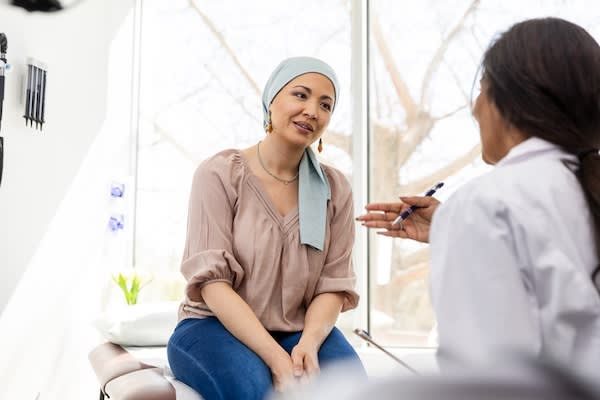Providence TeleStroke program redefines rural stroke care
[5 MIN READ]
In this article:
-
TeleStroke services allow Providence to provide rapid, expert stroke treatment, closing clinical health care gaps and disparities in rural areas.
-
The TeleStroke network serves 12,000 unique hospital stroke patients each year at more than 80 emergency departments and other locations.
-
Learn how telemedicine programs are changing stroke care and improving treatment options for people across the U.S.
Providence TeleStroke program redefines rural stroke care
Providence is a global leader in TeleStroke services, providing 24/7 rapid access to board-certified neurologists and improving treatment in rural areas throughout the U.S. As we honor National Rural Health Day, we look at the importance of rapid neurology expertise for stroke patients in rural communities.
Virtual care and digital health
The TeleStroke team, part of Providence Virtual Care and Digital Health, provides flexible, fast and equitable care. At Providence, 20,000 in-network health care providers connect with patients virtually in eight states, providing specialized telecare at 103 sites. In 2022, Providence provided 1.37 million patients with virtual critical care.
TeleStroke serves 12,000 unique hospital stroke patients each year at more than 90 sites across the country. When in-person vascular neurology resources are limited, the TeleStroke team can help by integrating seamlessly with radiologists, emergency physicians, pharmacists, nurses and therapists to provide expert care. This type of cost-effective virtual clinical support helps ensure that patients living in rural areas experiencing acute ischemic stroke have access to high-quality health care when every minute counts.
The importance of virtual stroke care in rural hospitals and communities
About one in five people in the U.S. live in rural areas, and about 22.2 million people live in rural areas with not enough health care providers, according to the National Institutes of Health (NIH).
A study published in Neurology in January 2024 noted that out of 70,858 defined geographic areas, 388 had no access to a neurologist within 60 miles. Additionally, rural areas had less access to neurologists compared with metropolitan areas.
According to NIH, telehealth has the potential to enhance rural health care significantly within the next decade.
Diane Lada, MSN, ACNP, is the senior clinical program manager of Virtual Care & Digital Health, TeleNeurology, at Providence.
Lada has seen the impact of the neurologist shortage at community hospitals firsthand. Telemedicine allows staff in Alaska to tap into a larger community of Providence professionals for stroke management and acute care. “It is brilliant to have that many neurologists and to have them emergently,” Lada says.
TeleStroke seeks to close gaps by making expert emergent care for people experiencing acute ischemic stroke more accessible.
“It really does afford those without the opportunity, the means, the surroundings to see a specialist—and a really good specialist—quickly,” Lada says. “We’re reaching deeper and further into rural areas, here in Alaska, but also in places that may look like and feel like a city, but they don’t have the specialists. Nationally, where some of those cities feel very rural just because they lack the specialties, we can bring them in without the rural boundary.”
Leveraging technology to improve stroke outcomes
Due to the nationwide shortage of neurologists, many work multiple shifts, serving their communities locally and assisting in emergencies virtually. Lada says one Providence neurologist, who was also a father of three, was working an extra shift virtually on Father’s Day. A patient entered the ER aphasic, meaning he couldn’t speak. Additionally, staff were experiencing a language barrier with the family, and trying to find an interpreter.
The neurologist appeared on camera. Immediately, he recognized the patient’s son. They were good friends who hadn’t seen each other in quite some time. What’s more, the neurologist knew the family’s dialect.
Through virtual observation, clear communication with the family, and data obtained through an exam and imaging, the patient was able to speak again, and the son “got his father back,” Lada says.
Evolving stroke care
Lada has worked as a neurology nurse for more than 30 years and has witnessed the effectiveness of TeleStroke care.
A couple of decades ago, a patient would come to the ER with stroke symptoms. Lada would call a physician, who would have to physically get to the emergency room. In later years, scans allowed doctors to see what was happening to the brain cells of their patients. They realized that minutes matter in stroke care.
In the early 1990s, neurologist Camilo Gomez, M.D., coined “time is brain.” When someone is having a stroke, Lada says, 2 million blood-brain cells die every minute. Researchers have worked extensively to find ways to decrease the door-in to door-out (DIDO) time.
“We had to find a way to speed up the process,” Lada says. “Ultimately, we turned to the camera because a lot of these doctors could not be at the bedside in time. We refined the way to get the doctor to the patient quicker.”
In 2010, the American Heart Association/American Stroke Association rolled out an initiative called Target: Stroke, which aims to streamline treatment processes. The goal: Treat 50 percent of patients within 60 minutes of walking through the ER’s doors. Today, providers and stroke specialists aim to treat ischemic stroke patients within 30 minutes of their arrival.
New research and technologies, such as the development of a medication that can be delivered via a syringe versus an IV, have helped Providence caregivers speed up their treatment timeframes. However, in many communities, the lack of on-site neurologists for the number of patients needed continued to be challenging.
Providence rolled out its TeleStroke program 14 years ago. Today, the average Providence TeleStroke provider response time is 2.4 minutes.
What TeleStroke care looks like
The moment a patient enters the ER with a suspected stroke, Providence caregivers take action. One of their first priorities is to get consent by explaining that they have a stroke-care specialist who can be on camera in the room virtually.
“I’ve never had a family member or patient say no,” Lada says.
A highly trained team performs the necessary exams and imaging. A neurologist, who may be located in a large city three time zones away, observes the patient and, using data obtained through the exam and imaging, provides an expert, real-time evaluation.
“They’re pretty amazing,” Lada says. “They’re taking the time to see that patient emergently. It’s just brilliant.”
Better patient outcomes, more dancing
A couple of years ago, a man traveled out of state to Alaska to visit his family. During the visit, he suddenly felt one-sided weakness. His face began to droop. He couldn’t speak. A family member called 911, and they arrived at Providence Alaska Medical Center.
Lada, a team of caregivers and a neurologist on camera were by his bedside within minutes. They had the patient in the cardiac catheterization lab in less than 50 minutes. There, they used a catheter to reach the exact area where the clot was in the brain.
Lada stayed with the patient throughout the procedure, repeating his kids’ names. Eventually, the patient responded, repeating his kids’ names to Lada and thanking the team.
“That is just the most exciting thing when you go from down on one side with no speech to full attention and saying names,” Lada says.
During follow-up visits, the man said all he wanted to do was dance at his granddaughter’s wedding. Recently, the family sent Lada pictures of just that.
“It’s really an honor to watch those outcomes,” Lada says.
Contributing caregiver
Diane Lada, MSN, ACNP, is the senior clinical program manager of Virtual Care & Digital Health, TeleNeurology, at Providence.
Learn more
Virtual Care and Digital Health at Providence provides patients many different types of rapid clinical care. Learn more about virtual options and how TeleStroke at Providence is improving patient care.
Download the Providence app
It’s all in the app: easily stay connected with Providence and your health. With the Providence app, you can schedule appointments, have virtual visits from the comfort of your own home, get health recommendations personalized for you, access your health records and so much more. Learn more and download the app.
Related resources
BE FAST: Know the signs of stroke
Providence expert weighs in on common stroke questions
Stroke in younger adults: The risks and signs
This information is not intended as a substitute for professional medical care. Always follow your health care professional’s instructions.



